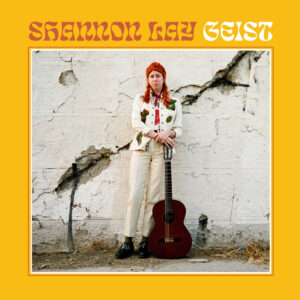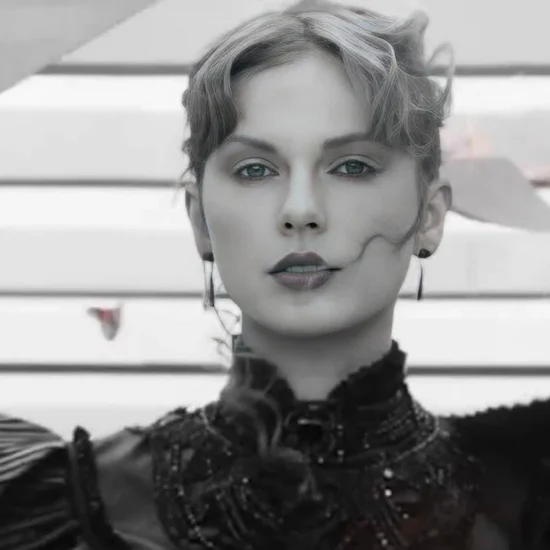
Listen to “Valentine,” the title cut on the latest album from Matador recording artist Snail Mail, and you feel transported back to the early years of Lollapalooza, if not earlier. The song opens with waves of ‘80s synth and staccato bursts of Police-style guitar, then segues into a crunchy power-pop chorus that Billy Corgan might have scripted.
Snail Mail grew up in the D.C. suburbs as Lindsey Jordan. She is 23. Surely, she is not a Billy Corgan fan. You ask anyway.
“I have a Smashing Pumpkins tattoo,” she replies. She holds it up to the Zoom camera.
Spin the latest albums by Lindsey or Marissa Nadler or Shannon Lay, and you will hear the fruits of a modern singer-songwriter movement, a string of masterful recordings by young, mostly female artists who grew up listening to their parents’ records, and who value songcraft above all.
Lindsey Jordan absorbed influences as diverse as Lana Del Ray, Prince and the Church. Shannon Lay, an erstwhile punk rocker from Redondo Beach, California, drew early inspiration from the Backstreet Boys and Spice Girls before tapping her “weird” gene and discovering Elliott Smith and the Velvet Underground. Marissa Nadler, a self-taught finger-picker from Boston, progressed from Madonna and Abbey Road to Joni Mitchell, Bob Dylan and Nina Simone.
And what is a singer-songwriter? Dylan, the Beatles and Curtis Mayfield, among others, pioneered the practice of populating full albums with music they wrote and sang, bucking long tradition that had separated writer from performer and padded long-players with endless, redundant covers. Their work inspired the so-called singer-songwriter era, a generation of artists in the 1960s and early 1970s who wrote observational, confessional songs on acoustic guitars and pianos and presented them on albums with little adornment. Joni Mitchell’s Blue album arguably marked the movement’s peak.
The singer-songwriter era eventually faded, but songcraft burned on through successive generations of artists who prized melody and harmony, chord inversions and counterpoint, from the guttural growl of Tom Waits to the heartbreaking waltzes of Elliott Smith to the spine-chilling strings that close “Purple Rain.”
The best of the new singer-songwriters channel all of those artists and many others. They are mostly women, a refreshing trend after decades of music-industry Guyville, a sea change that Joni would appreciate.
Here are six standout albums from the new singer-songwriter movement. Three were recorded and released in the pandemic, a sort of global timeout that blessed all these artists with the precious gift of time.
Valentine, Snail Mail (2021)
Lindsey Jordan has been recording and releasing music since 2015, when she was in high school. Valentine is her second long-player.
The title track builds toward a shimmering chorus, as catchy and tuneful as any Smashing Pumpkins single. It’s her triumphal concert opener, the kind of song that will still be buzzing around a listener’s head on the subway ride home.
The album proceeds on a warm power-pop vibe. “Headlock” unfolds around an open B string on Lindsey’s prized Fender Noventa Jazzmaster. The lovely chorus, jangly arpeggios over a stepwise bass, rings as melodic as XTC’s Andy Partridge in his prime. “Forever” channels Andy Summers, Prince and Avalon-era Roxy Music with elegant ‘80s synth motifs and muted guitar rhythms. Throughout, Lindsey embraces and envelopes the listener with her voice, warm and ragged and impassioned.
Valentine pushed Lindsey into the indie-rock big leagues. She credits the pandemic, which gave her time to breathe.
“I had barely done any writing on Valentine. When the pandemic hit, I had three songs,” she recalls. A year later, she had one of the finest albums of 2021.
Geist, Shannon Lay (2021)

Five albums in, Shannon Lay remains a consummate indie artist, her email address printed right on her web page. If the pandemic gave Lindsey Jordan breathing room, it delivered a ray of inspiration to Shannon.
“I felt called to kind of try to explain what I was going through,” she says, “because I felt so many other people were going through it as well. I felt there were so many people who needed to hear this message: Keep going.”
Geist offers some of the most starkly beautiful folk guitar figures put to vinyl since Nick Drake plucked his last. “Rare to Wake,” the opener, warms the soul like a pastoral sunrise. Shannon’s angelic, double-tracked lullaby lilt glides atop a hypnotic, cycling fingerstyle riff on her Córdoba acoustic, anchored to a simple jazz bass and adorned with splashes of Fender Rhodes keyboard.
The second track, “A Thread to Find,” posits a breathtaking melody atop a simple guitar pattern, animated with looping, Eno-style keyboard runs and a dash of Nick Drake strings.
The title track may be the loveliest musical statement on the album. Shannon’s distinctive guitar, tuned down two full steps to C, resonates with earthy calm.
The Path of the Clouds, Marissa Nadler (2021)

Marissa Nadler has been making records for nearly two decades. She has recorded many beautiful songs, but The Path of the Clouds may be her most accomplished album.
Like Shannon and Lindsey, Marissa found herself with extra time when the pandemic descended.
“I recorded most of the record by myself at home and emailed people I like to work with,” she says. “After hearing how all the instrumentation was coming along, I decided to do everything again.”
Clouds boasts dense layers of instrumentation and sublime vocals. The standout cut, “If I Could Breathe Underwater,” began as a fingerpicked ballad in an open Joni Mitchell tuning. “I had so many fingerpicked ballads in my long discography,” she says, “I felt it was time to try something else.” The song emerged as an multi-layered masterpiece, positing Marissa’s gorgeous, breathy vocals atop pulsing waves of synthesizer and gently marching drums. Sludgy guitars pull the listener into the dreamy title track, which proceeds at a Quaalude-y pace.
“Pink Floyd was my favorite band, growing up,” she explains.
Titanic Rising, Weyes Blood (2019)

Weyes Blood is Natalie Mering, raised mostly in Doylestown, Pennsylvania. Like Shannon, Natalie followed a circuitous musical path, dabbling in noise rock and once fronting a band called Satanized, doubtless to the delight of her Pentecostal parents.
With Titanic Rising, her fourth album, Natalie celebrates the lost soft-rock splendors of Karen Carpenter, David Gates and Harry Nilsson. Everything about Titanic Rising screams “difficult,” from the funereal title to the artist’s name to the cover art of Natalie drowning in her bedroom. But you will not find a more listenable album recorded in that portentous pre-covid year.
The eerie piano chords that open “A Lot’s Gonna Change” tug the listener back fifty years, to a time “when I had the whole world gently wrapped around me.” From Natalie’s powerful contralto to the lush orchestrations to the ethereal piano, this is a work of consummate songcraft.
“Andromeda” sounds like a lost ‘70s classic, channeling George Harrison’s weepy slide guitar and Carly Simon’s Earth-mother vocals. “Everyday” sounds like a buried Nilsson treasure, or an outtake from Sergeant Pepper.
Reward, Cate Le Bon (2019)

Cate Le Bon sang her first EP in Welsh. Her recorded output alternately challenges and entertains. Gruff Rhys, singer for the Welsh band Super Furry Animals, described one of Cate’s early singles as Bobbie Gentry and Nico fighting over a Casio keyboard.
Reward, Cate’s fifth album, may stand as her masterpiece. “Miami,” the first song, unfolds as a symphony of counterpoint, a compositional feat almost on a Philip Glass scale. When Cate performed the song as her opening number at the Black Cat in Washington, D.C., in the summer of 2019, the crowd received it in mesmerized silence. At the end, someone in the back cried out, “You’re amazing,” capturing the mood.
As Gruff infers, Cate Le Bon on Reward sounds a bit like Nico, the Velvet Underground chanteuse, fronting a band led by Brian Eno and creating music that playfully pushes the boundaries of pop. “Daylight Matters” sails along on sinewy guitar lines and warm major seventh piano chords. “Home to You” sounds like Japanese pop from a parallel universe.
Song for Our Daughter, Laura Marling (2020)

Laura Marling is thirty-two but has been making music in Britain for half her life: She is Snail Mail, ten years on. Like Marissa Nadler, Laura has released several albums to strong acclaim. Yet, nothing in her past catalog approaches the magnificence of Song for Our Daughter, her seventh album.
“Alexandra,” the opener, might have dominated FM radio circa 1973. The song opens with an up-the-neck acoustic guitar figure, like the ones Crosby, Stills & Nash used to play. It settles into a warm ‘70s pop groove, Laura’s stately melody soaring atop steel-guitar flourishes and tumbling drums. “Held Down,” the second song, opens with a lovely rising melody answered by a cascading three-part harmony. The bitter title track offers painful lessons for the next generation.














